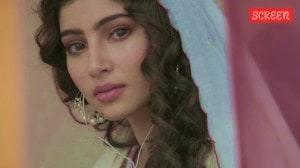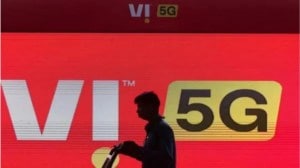Hum to Hatya: The ultimate Bollywood’s so-bad-they’re-good hits from 1980’s-90’s
The secret love for cinema so bad it is good cuts across languages. Can you resist a Hindi film with rubber crocodiles?
 Matinee and madness: Cinema swings between the camp and the pretentious. There is rarely a middle ground: Hatya, Mohabbat Ke Dushman, Hum and Khatron Ke Khiladi.
Matinee and madness: Cinema swings between the camp and the pretentious. There is rarely a middle ground: Hatya, Mohabbat Ke Dushman, Hum and Khatron Ke Khiladi.
Watching bad Hindi films was mandated by the Indian state. Doordarshan’s skimpy budget allowed it to buy only the box-office flops and broadcast them on Sunday evenings. One can argue that just because a film has tanked with the public doesn’t necessarily make it a bad film. The socialist recycling of entertainment meant that the same films that had been rejected by the masses then went on to become unforgettable cultural reference points for people.
Images from those Sunday films are stuck in my head. Danny Dengzongpa reaching out for a suitcase in a shaking train compartment, when his coat sleeve slips back to reveal a tattoo on the wrist: K.K. His cover is blown. I felt a connection with all films in which light-eyed Sarika played a little boy. In most, she/he suffered at the hands of a cruel stepmother. I’d disappear into my mother’s skirt and shed buckets of tears: Why is she torturing him, Ma?
Cinema, as an art form, is the pendulum that swings between the camp and the corny to the one side, and pretentious on the other. There is rarely a middle ground. It’s the nature of the beast. So to write on films that are so-bad-that-they-are-good will have, by definition, an elitist tinge to it. One person’s corn is another person’s gold.
For instance, Qayamat Se Qayamat Tak (1988) is not a traditional so-bad-that-it’s so- good film. And yet, that last scene where Aamir Khan’s character plunges a knife into his stomach, to a slow version of Papa kehtey hain (while the father screams “Naheeee…”), was enacted in innumerable slumber parties we had as children, the knife replaced by a small plastic ruler.
Growing up in Allahabad in the 1980s, I strung along with my parents to watch 36, Chowringhee Lane (1981, directed by Aparna Sen) and Kramer vs Kramer (1979, Robert Benton) at the Palace Theatre, owned by Feroze Gandhi’s family. I’d often fall asleep, being too young to follow the “adult” storylines. My parents weren’t flag-waving Bollywood types. It was at the age of 12 or 13 that the idea of catching the latest Hindi blockbuster in a cinema hall got into my head. I found allies, not in Allahabad, but in Dehradun and Bombay, family homes I visited every school vacation. The allies were my aunt, Divya masi, and my grandmother, Dadiji.
The year is 1988. With Divya masi, I go to see my first Amitabh Bachchan film, also Manmohan Desai’s last, Gangaa Jamunaa Saraswathi (GJS). The highlight of the film is the scene where Amitabh’s Ganga, a truck driver, fights with rubber crocodiles and manages to sling one inflatable reptile on his back. GJS also boasts of a snake that downs pints of milk and a baby that goes flying through the air in the direction of a river, before it gets lodged in a tyre, and is saved from drowning. Rubber was central to the plot of GJS.
Later, the same year, Dadiji and I went on a mini-rampage across Dehradun’s theatres. At 13, I was making up for lost time, while she was making the most of her remaining healthy years. That summer of ’88 we saw: Khatron Ke Khiladi (TR Rao), Mohabbat Ke Dushman (Prakash Mehra) and Hatya (Kirti Kumar). On a neighbour’s VCR we saw Aakhri Adaalat (Rajiv Mehra). My poet father thought that he had lost both mother and son to the wolves of low culture.
Of these, the first three qualify eminently for this piece. Khatron… featured Dharmendra as a truck driver, who dispenses vigilante justice from a teesri adaalat. This film makes the cut purely on account of the Zorro-style costume that Dharmendra wears, complete with black hat, gloves, cape and sleeveless jacket, while doling out fatal punches and kicks. He also drives an assault vehicle, which looks like a bigger version of the Nano, and possesses the capability to sprout multiple blades right where the headlights are.
Mohabbat Ke Dushman (Prakash Mehra) was a two-and-half-hour-long feudal love saga that I remember for its unflagging chaste Urdu dialogue (by Laxmikant Sharma) with nine songs of six minutes average length, which meant an hour of the film was dedicated to singing and dancing. The chandelier dims as Pandit (Om Prakash) dies in the arms of his dear friend Rahmat (Raaj Kumar).
Hatya had a terrific plot, so wild that it had to be good: Sagar (Govinda) has lost his wife and child, Raja, and spends his days drinking heavily, and singing and dancing at weddings for a living. One night, while returning home, he stumbles upon a baby in a rubbish dump. He adopts the deaf-mute baby and names him Raja. Then the twist: a rich businessman files a police complaint that Raja is his grandson and accuses Sagar of having murdered Raja’s mother. As Sagar is tortured in a cell, the businessman’s goons close in on the baby, who they believe is witness to a murder they’ve committed.
The best I’ve saved for last. Hum (1991) starring Amitabh, Rajinikanth and Govinda, gets the gold medal. Govinda and Rajini are involved in a slo-mo pelvic face-off: “Bete lal, dikha do inko disco aur Bharatanatyam ka kamaal”. A robotic arm picks out the Batman soundtrack L.P. from a rack and drops it on the turntable; Rajini flicks a cigarette into his mouth, his hat detaches itself and hovers above his head, while he lip syncs, Get the funk up. Govinda slides at speed, face-down, on the slippery floor between parted male legs, to the tune of Prince’s Batdance. The pounding drum machine of the original merges with the sounds of desi dishum-dishum.
In a candlelight arm-wrestling bout, Govinda outlines why he will win the round in question: “Aaj tu mujhse jeet nahin sakta, kyonki aaj raakhi ka din hai. Darwaze pe nazre bichaye meri bhabhi mera intezaar kar rahi hogi. Aur main in jeete hue rupiyo se, apni bhabhi ko ek… pressure cooker lakar doonga.” At “pressure cooker”, he applies decisive pressure on his rival’s wrist; at doonga, he slams the rival’s fist with finality and wins the round to loud cheering. Rakshabandhan, Friday jumma and Prince: Hum had it all. Those were the days.
The writer is the author of The Butterfly Generation. This article appeared in the print edition with the headline ‘The Summer of ’88: If you needed a campy playlist from 1980s-’90s Bollywood, look no further’





- 01
- 02
- 03
- 04
- 05


























